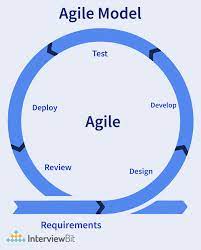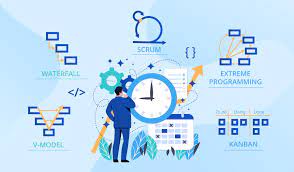Agile Development in Software Engineering: Embracing Flexibility for Success
In the fast-paced world of software engineering, traditional development methodologies often struggle to keep up with the ever-evolving demands of clients and users. This is where Agile Development comes into play, offering a flexible and collaborative approach that has revolutionized the industry.
Agile Development is a set of principles and practices that prioritize adaptability, collaboration, and continuous improvement throughout the software development lifecycle. Unlike traditional waterfall methods, Agile breaks down projects into smaller increments called iterations or sprints. Each iteration focuses on delivering a working piece of software that can be tested and reviewed by stakeholders.
One of the key principles behind Agile is customer collaboration. By involving clients or end-users in every stage of development, Agile teams gain valuable insights and feedback that help shape the final product. This iterative process allows for changes to be made early on, reducing the risk of costly modifications later in the project.
Another crucial aspect of Agile is its emphasis on cross-functional teams. Instead of assigning specific roles to individuals, Agile encourages collaboration among developers, testers, designers, and other stakeholders. This promotes a shared understanding of project goals and fosters a sense of collective ownership over the outcome.
One popular framework within Agile is Scrum. Scrum divides work into time-boxed iterations called sprints, typically lasting two to four weeks. During each sprint, teams define a set of goals or user stories to be completed within that timeframe. Daily stand-up meetings keep everyone aligned on progress and any potential obstacles.
Kanban is another widely used approach within Agile Development. It visualizes work as a flow through a Kanban board with columns representing different stages such as “To Do,” “In Progress,” and “Done.” This allows teams to manage their workload efficiently while maintaining transparency across all tasks.
The benefits of adopting an Agile approach are numerous. First and foremost, it enables faster delivery times by focusing on smaller, manageable increments. This allows for more frequent releases and quicker responses to changing requirements. Additionally, the iterative nature of Agile promotes early detection and resolution of issues, leading to improved quality and customer satisfaction.
Agile Development also encourages a culture of continuous improvement. Regular retrospectives provide opportunities for teams to reflect on their processes and identify areas for enhancement. This fosters a learning environment where teams can adapt and grow with each project.
However, it is important to note that Agile is not a one-size-fits-all solution. It requires commitment, collaboration, and open communication from all team members. Stakeholders must be engaged throughout the process to ensure alignment with business objectives.
In conclusion, Agile Development has transformed software engineering by embracing flexibility, collaboration, and continuous improvement. Its iterative approach allows for faster delivery times, improved quality, and increased client satisfaction. By adopting Agile principles and practices, software development teams can navigate the ever-changing landscape of technology with confidence and success.
Frequently Asked Questions about Agile Development in Software Engineering
- What are the five steps in Agile development?
- What are the 4 principles of Agile?
- What is Agile development example?
- What is the Agile development process in software engineering?
What are the five steps in Agile development?
Agile development follows a cyclical process that consists of five key steps. These steps are:
- Planning: In this initial step, the project team, including stakeholders and developers, collaboratively define the scope and goals of the project. The team identifies the features or user stories that will be developed during the iteration or sprint. Planning also involves estimating the effort required for each task and prioritizing them based on their importance.
- Development: Once the planning is complete, the development phase begins. Developers work on implementing the features or user stories identified in the planning stage. The team follows coding best practices and collaborates closely to ensure that tasks are completed efficiently and effectively.
- Testing: Testing is an integral part of Agile development. As features are developed, they are tested rigorously to ensure they meet quality standards and fulfill user requirements. Testers work closely with developers to identify any defects or issues early on, allowing for prompt resolution.
- Review: At regular intervals throughout the development process, typically at the end of each iteration or sprint, a review takes place. This is an opportunity for stakeholders to assess the progress made so far and provide feedback on completed features or user stories. The review helps validate whether the project is on track and whether any adjustments need to be made.
- Retrospective: The retrospective step occurs after each iteration or sprint and focuses on continuous improvement. The project team reflects on what went well during that iteration and identifies areas for improvement in terms of processes, communication, collaboration, or any other aspect of development. The retrospective allows teams to learn from their experiences and make adjustments to enhance future iterations.
These five steps – planning, development, testing, review, and retrospective – form a continuous cycle in Agile development known as an iterative approach. This iterative nature allows teams to adapt quickly to changing requirements while continuously improving their processes and delivering value at a faster pace.
What are the 4 principles of Agile?
The Agile Manifesto outlines four key principles that serve as the foundation for Agile development:
- Individuals and interactions over processes and tools: This principle emphasizes the importance of valuing people and their interactions within a project. It recognizes that effective communication and collaboration among team members are crucial for success, even more so than relying solely on processes or tools.
- Working software over comprehensive documentation: Agile prioritizes delivering working software that meets the needs of users or clients. While documentation is still important, it should not hinder progress or become a substitute for tangible results. The focus is on creating functional software that can be tested and refined throughout the development process.
- Customer collaboration over contract negotiation: Agile promotes active involvement of customers or end-users in the development process. By collaborating closely with stakeholders, teams can gain valuable insights, feedback, and ensure alignment with customer expectations. This principle emphasizes building strong relationships with customers based on open communication and shared understanding.
- Responding to change over following a plan: Agile recognizes that change is inevitable, especially in dynamic industries like software development. Rather than rigidly adhering to a predetermined plan, Agile embraces flexibility and welcomes changes in requirements or priorities. Teams should be able to adapt quickly to new information or market conditions to deliver maximum value.
These principles serve as guiding values for Agile teams, encouraging them to prioritize individuals, working software, customer collaboration, and responsiveness to change throughout the development process.
What is Agile development example?
One popular example of Agile development is the Scrum framework. Scrum is an iterative and incremental approach to software development that emphasizes flexibility, collaboration, and quick delivery of working software.
In Scrum, a project is divided into time-boxed iterations called sprints, usually lasting two to four weeks. At the beginning of each sprint, the team collaboratively defines a set of goals or user stories to be completed within that timeframe. These goals are then broken down into smaller tasks.
Throughout the sprint, the team holds daily stand-up meetings to discuss progress, any obstacles encountered, and plans for the day. This promotes transparency and keeps everyone aligned on project status.
At the end of each sprint, a review meeting is conducted to demonstrate the completed work to stakeholders and gather feedback. This feedback informs future iterations and allows for adjustments based on changing requirements.
Another example of Agile development is Kanban. Kanban visualizes work as a flow through a Kanban board with columns representing different stages such as “To Do,” “In Progress,” and “Done.” Tasks are represented as cards that move across the board as they progress through various stages.
With Kanban, teams have clear visibility into their workflow and can easily identify bottlenecks or areas where tasks are piling up. This enables them to manage their workload efficiently and ensure a smooth flow of work.
Both Scrum and Kanban are examples of Agile development methodologies that promote collaboration, adaptability, and continuous improvement throughout the software development process. These frameworks have been widely adopted in various industries due to their effectiveness in delivering high-quality software while accommodating changing requirements.
What is the Agile development process in software engineering?
The Agile development process in software engineering is a flexible and iterative approach to software development that emphasizes collaboration, adaptability, and continuous improvement. It breaks down the development lifecycle into smaller increments called iterations or sprints, allowing for more frequent feedback and adjustments.
Here is a general overview of the Agile development process:
- Project Initiation: The project begins with gathering requirements, defining goals, and establishing the overall vision. The product owner or client collaborates with the development team to create a backlog of features or user stories.
- Sprint Planning: The team selects a set of user stories from the backlog to be completed during the upcoming sprint. They estimate the effort required for each story and determine what can realistically be accomplished within the sprint’s timeframe.
- Sprint Execution: The development team works on implementing the selected user stories during this time-boxed iteration, typically lasting two to four weeks. Daily stand-up meetings are held to discuss progress, address any obstacles, and keep everyone aligned.
- Continuous Integration and Testing: Throughout the sprint, developers integrate their work regularly to ensure that changes do not conflict with each other. Automated testing is conducted continuously to catch any defects early on.
- Review and Feedback: At the end of each sprint, a review meeting takes place where stakeholders can see a demonstration of the completed user stories. They provide feedback and suggest any changes or additions they would like to see in future iterations.
- Retrospective: Following the review meeting, a retrospective is held where the team reflects on their processes and identifies areas for improvement. This could involve discussing what went well during the sprint and what could be done differently in future sprints.
- Incremental Delivery: As each sprint concludes, there is an opportunity for releasing a working piece of software that incorporates completed user stories. This allows stakeholders to start benefiting from incremental improvements while providing valuable feedback for further iterations.
- Repeat: The Agile development process continues with subsequent sprints, iterating on the backlog of user stories until the desired product is achieved. Each sprint builds upon the previous one, incorporating feedback and adjusting priorities as needed.
The Agile development process promotes collaboration, adaptability, and transparency throughout the software development lifecycle. By breaking down projects into smaller increments and involving stakeholders at every stage, Agile enables faster delivery times, early issue detection, and continuous improvement.




